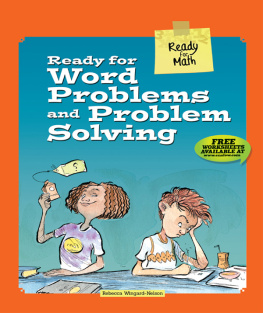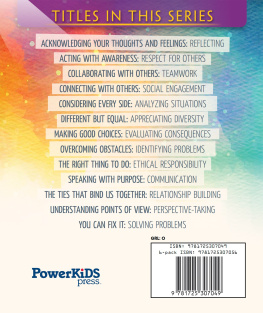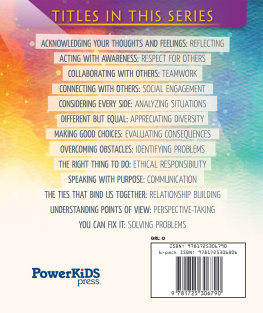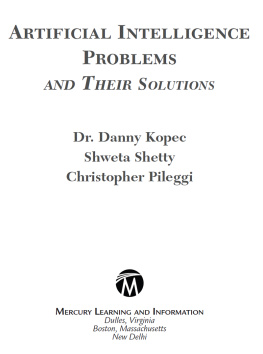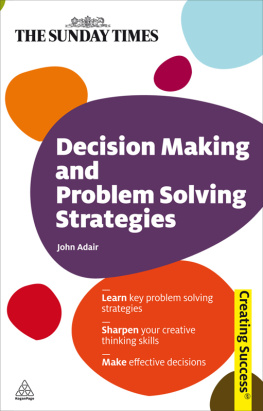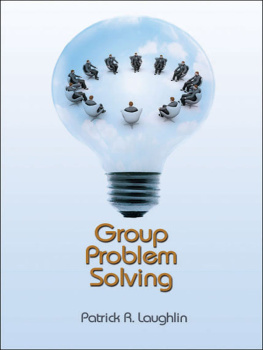Aditi Agarwal - An Expert Guide to Problem-Solving: With Practical Examples (Learn Brainstorming, Fishbone, SWOT, FMEA, 5Whys + 6 more)
Here you can read online Aditi Agarwal - An Expert Guide to Problem-Solving: With Practical Examples (Learn Brainstorming, Fishbone, SWOT, FMEA, 5Whys + 6 more) full text of the book (entire story) in english for free. Download pdf and epub, get meaning, cover and reviews about this ebook. year: 2016, publisher: Aditi Agarwal Books LLC, genre: Romance novel. Description of the work, (preface) as well as reviews are available. Best literature library LitArk.com created for fans of good reading and offers a wide selection of genres:
Romance novel
Science fiction
Adventure
Detective
Science
History
Home and family
Prose
Art
Politics
Computer
Non-fiction
Religion
Business
Children
Humor
Choose a favorite category and find really read worthwhile books. Enjoy immersion in the world of imagination, feel the emotions of the characters or learn something new for yourself, make an fascinating discovery.
- Book:An Expert Guide to Problem-Solving: With Practical Examples (Learn Brainstorming, Fishbone, SWOT, FMEA, 5Whys + 6 more)
- Author:
- Publisher:Aditi Agarwal Books LLC
- Genre:
- Year:2016
- Rating:5 / 5
- Favourites:Add to favourites
- Your mark:
An Expert Guide to Problem-Solving: With Practical Examples (Learn Brainstorming, Fishbone, SWOT, FMEA, 5Whys + 6 more): summary, description and annotation
We offer to read an annotation, description, summary or preface (depends on what the author of the book "An Expert Guide to Problem-Solving: With Practical Examples (Learn Brainstorming, Fishbone, SWOT, FMEA, 5Whys + 6 more)" wrote himself). If you haven't found the necessary information about the book — write in the comments, we will try to find it.
Do you have complex problems?...
...Are your solutions effective? Do the problems reappear?
Most of us encounter problems in our lives, either at work or at home. These problems cause stress in our minds and leave us exhausted. Instinctively, we start to take ad-hoc actions that we think will resolve the problem, but we soon realize that our actions are not effective and do not prevent or solve the core problem.
Structured problem solving provides a systematic approach to identifying the root causes of a problem. Many scientific tools and methods have been developed to identify effective solutions to any problem. The most widely used problem-solving techniques are listed below:
- Fishbone Diagram
- Brainstorming
- Failure Modes and Effects Analysis (FMEA)
- SWOT matrix
- 5Whys
In this latest version, I have included a new chapter to introduce you to 6 additional problem-solving techniques:
- Six Thinking Hats
- Plan-Do-Check-Act (PDCA) cycle
- Hursons Productive Thinking Model
- Story Boarding
- Means-Ends Analysis (MEA)
- First Principles Thinking
Learn popular problem-solving techniques with practical examples. Read Now!
Aditi Agarwal: author's other books
Who wrote An Expert Guide to Problem-Solving: With Practical Examples (Learn Brainstorming, Fishbone, SWOT, FMEA, 5Whys + 6 more)? Find out the surname, the name of the author of the book and a list of all author's works by series.


